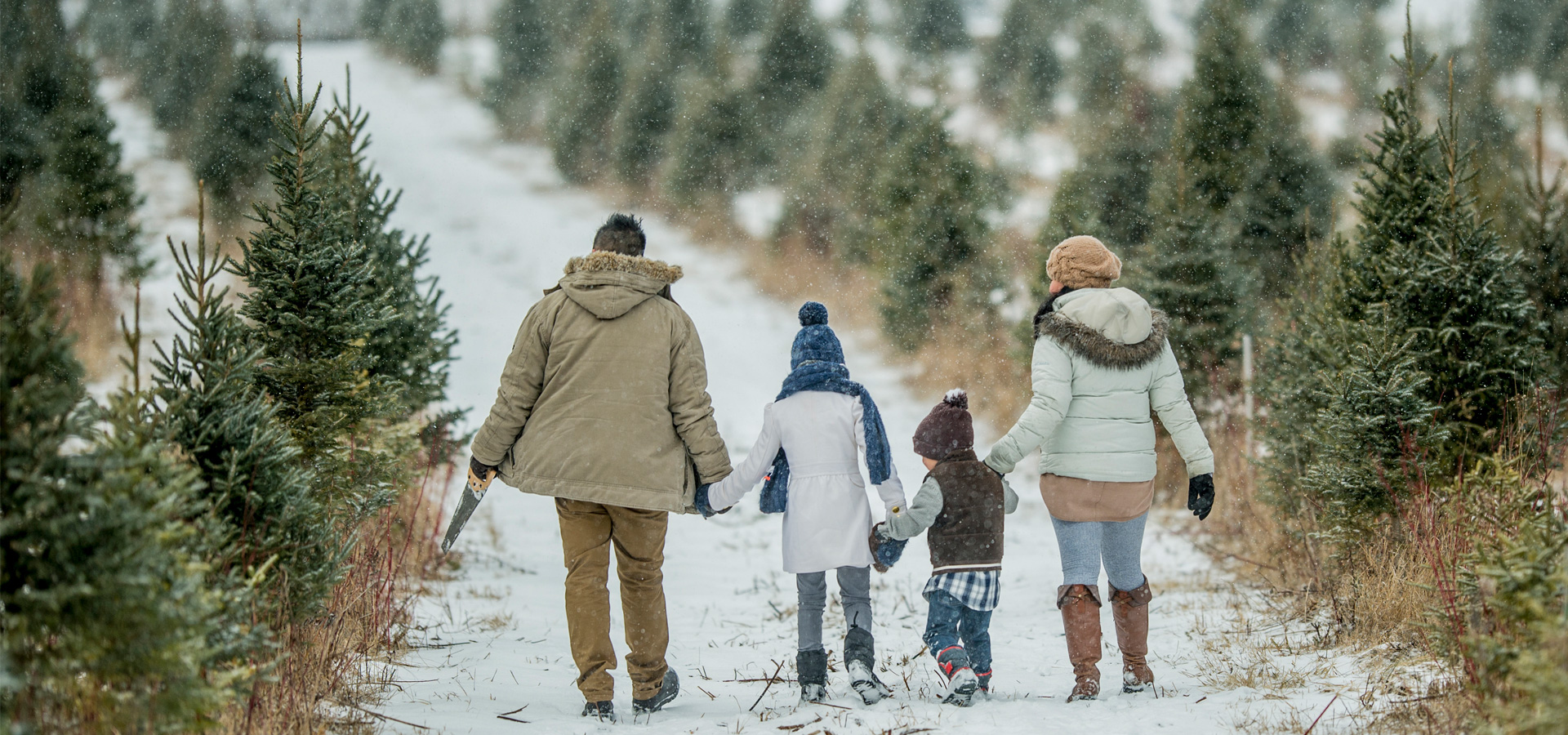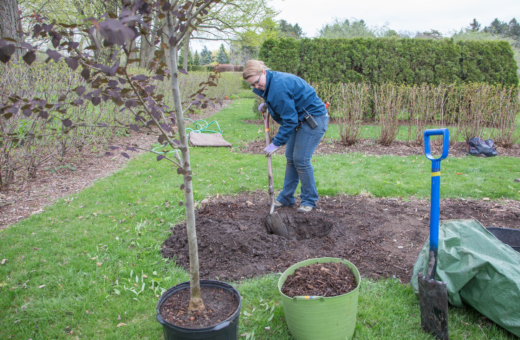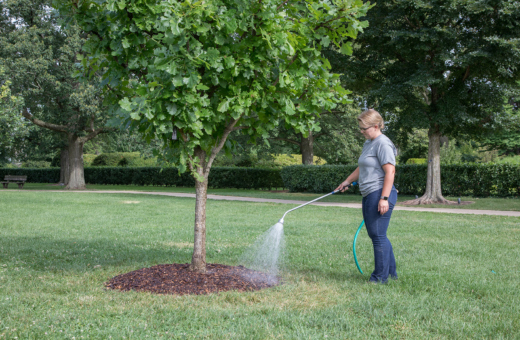November 21, 2024
People often buy fresh Christmas trees long before December 25. Whether you plan to have your tree up for six weeks or one week, choose it carefully and care for it properly to keep it fresh in your home. A tree that is not cared for can dry out and become a fire hazard.
Here are some tips from the Arboretum’s Plant Clinic for holiday tree care.
Plan for watering. A Christmas tree needs water like cut flowers in a vase. Since the vessels where water flows are right under the tree’s bark, it’s important to keep the bark undamaged. Make sure your tree stand holds at least a gallon of water.
Choose a tree that will fit in your stand. Never try to whittle down the trunk to fit a too-small stand; that will destroy the water vessels under the bark so the tree can’t take up water and will quickly dry out. It’s a good idea to take the stand to the tree lot to make sure you choose one that will fit.
Buy a fresh tree. If your tree was recently cut, you’ll have more time to enjoy it before it dries out and becomes a hazard. The freshest tree is one you cut yourself from a choose-and-cut tree farm. Trees from small local lots are likely to have been harvested within a few days or weeks and be fairly fresh. Trees sold at large retailers may have been cut months ago to be distributed to many locations. They should be carefully checked for freshness.
Test for green, firm, flexible needles. To judge whether a tree is fresh, gently brush a branch with your hand. If many needles fall off or if the needles feel stiff or crackly, the tree is dry and should not be bought. Needles on a fresh tree are plumped with water. They should be firmly attached, pliable, and fragrant. It’s normal for an evergreen in autumn to lose some yellow or brown needles, but dropping a significant number of green needles is an indication that the tree is drying out. If the seller won’t let you unwrap a tree to see if it’s fresh, don’t buy it.
Select a suitable species. Some evergreen species dry out more slowly and keep their needles longer than others. Needle types and branching forms also differ; some kinds of trees have soft, bendy branches, and others have stiff branches that can support heavy ornaments. Learn more about different kinds of Christmas trees here. Among the species most often sold in the Chicago area are Fraser fir, balsam fir, concolor fir, and Scots pine.
Make a new cut. When an evergreen’s trunk is cut, sap quickly dries and seals the surface. To open your tree to water, cut off about an inch from the bottom, or ask for that to be done at the tree lot. Place the tree in water within an hour or so after it’s cut, before sap has a chance to seal the trunk again.
Store a tree in water. If you aren’t yet ready to set the tree up indoors, place it in a bucket of water outdoors in a sheltered spot or in an unheated garage. Top off the water in the bucket daily.
Keep the tree far from heat. When you set up the tree indoors, position it well away from heat sources such as a radiator, heating vent, or fireplace. Even a very sunny window can dry out a tree. Place the tree stand on a waterproof surface, such as a plastic tarp, to protect carpeting or wood floors.
Fill it up. As soon as the tree is in place, fill the stand with warm tap water. Check the water at least twice daily and refill as necessary. Never allow the water level to fall below the bottom of the trunk; if the cut surface is exposed to air and seals with sap, the tree will not be able to absorb any more water.
Use plain water. Don’t add aspirin, sugar, or any other substance. Water is all the tree needs.
Decorate with lights that stay at a cool temperature. Older incandescent tree lights run hot. Newer LED lights not only use much less energy, but because they are more efficient and cooler, they don’t dry out a tree nearly as much.
Keep checking for freshness. It’s normal for a tree to lose a few needles every day. If it begins to lose many needles and the branches become brittle, the tree has dried out. Remove it from the house for safety’s sake.



